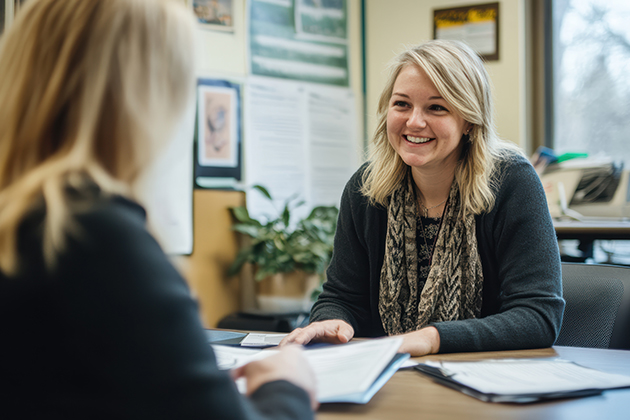Publication | Moving from Listening to Action; A Guide to Facilitating Focus Groups for Community Asset Identification
Publication | Moving from Listening to Action; A Guide to Facilitating Focus Groups for Community Asset Identification

INTRODUCTION
Involving community members to explore their local health environment is an effective way to engage people in discovery of community assets. This publication provides guidance to Extension Agents to facilitate a focus group to explore health assets and organize community members for follow-up health improvement actions.
Hosting a community listening session has three primary organizing components:
- Organizing for the Event
- Facilitating the Event
- Moving to Action
ORGANIZING A FOCUS GROUP
Hosting a listening session with community members can be beneficial in two outcome categories; process outcomes and information outcomes. Process outcomes are often overlooked. Process outcomes can result from the way the forum is planned and facilitated. Information outcomes generally generate more attention. Information outcomes refer to the content, topics or ideas generated at the session and the community projects to be acted upon.
The process outcomes of a facilitated focus group can be short-term community changes. These outcomes can be attended to in the planning stage for a public forum. In our SNAP-Ed PSE work, these short term outcomes include:
- Fostering community readiness for action
- Identifying champions to lead change initiatives
- Creating community partnerships to address change
Achieving these outcomes address the indicators of community change short term goals established by the USDA SNAP ED PSE evaluation framework for Nutrition, Physical Activity, and Obesity Prevention. With effective planning, these short-term outcomes can be purposefully planned when organizing and facilitating a focus group.
Guidance for hosting a forum can be found in A Conveners’ Guide to Hosting a Public Forum, UK Extension publication KELD CLD 12-2. The Conveners Guide details a process that includes who to involve and how to frame the topic to support engagement and involvement. Organizing to host a forum or focus group is the first opportunity to attend to community readiness, creating or strengthening partner organizations, and identifying champions to lead community change.
The action steps and PSE change initiatives needed to improve access to health focused resources, programs, or activities identified during the facilitated event are the topical outcomes. As the facilitator of this event, your job is to “unearth” these ideas and support the group toward identifying appropriate actions. You will be in an important position to help participants organize action steps for medium and long-term change.
FACILITATING A PSE FOCUS GROUP
A focus group is a guided discussion of a knowledgeable or interested group of people to gather information, attitudes and perceptions relating to the topic of focus. In a PSE Listening to Action session, the group discussion will result in identifying policy, systems or environmental issues related to community health. The group format resembles a group interview, with the benefit of allowing group participants to build off one another’s comments and ideas. In this way, a Moving from listening to action group can provide more diverse feedback than interviews, and participants can learn from one another. A well-facilitated PSE Moving from listening to action group can foster a shared understanding of local assets and resources, can serve as a shared learning experience, and can help a group consider community level priorities and next steps.
Size of Group
To get maximum participation out of each person, focus groups are frequently kept small. Larger groups create a challenge to engage all participants meaningfully. Typically, 7-10 participants, plus the facilitator and recorder, constitute the group. Depending on the issues, types of participants to be included, scale of participation desired, and the time available, multiple focus groups can be conducted at different locations with different populations. Because the topic of health-related policy, systems, and environment is such a broad topic, it is recommended that focus group discussion topics are narrowed to be more specific. For example, in the counties where the UK SNAP-Ed project led discussions, the first round of focus groups identified community issues around food access, physical activity access and health services. Covering so many topics made it difficult to have deeper exploration of a single topic. Subsequent focus groups could be held on the topic of transportation, food systems mapping, community communications or other topics that surfaced as priorities at previous focus groups. The local planning team should discuss the merits of multiple Moving from listening to action groups. Keep in mind the diversity of situations and geography of county residents and remember that more people involved in community discovery may lead to more people taking action for improved health.
Preparing for the Session
Prior to the session, post a large sheet of paper on the wall as the focal point of the discussion. Organize chairs in the room so participants can see each other when they talk. A half circle works best. Draw a skeleton of what will be discussed (key topic areas) on the large sheet of paper on the wall. If you are going to discuss environmental health assets, you might draw a tree as the note capturing framework. The wall chart will be a visual aid for recording information about the community, help to visualize the connections of a healthy community, and serve as a documentation of the conversation.
Having this key topic framework in advance will help you categorize types of assets as the group identifies them. Record their answers in or around the topic box where it is most logical. Once assets are listed, ask additional questions to explore access and availability. Near the listing of the asset, inquire about the policies or rules that govern participation, and the system attributes (how it is communicated, when it is available, etc.) that influence access or participation. These might include the condition of available equipment, what groups have access, rules that support or hinder participation, and/or hours of operation or schedules.
Facilitating the Focus Group
With any public gathering, it is best to start with an introduction of yourself, the participants, and the reason you are gathered. In doing so, you will help clarify expectations, allow people to start talking, and may be helping the participants to form new social connections. Try to establish a stress-free and open environment for the forum. Share with the participants the time allocated for the focus group, and the anticipated outcomes of the focus group. The facilitation framework for the Discovery phase of the facilitation is included in this document to be used to guide your focus group conversation.
It is a good idea to have a partner when facilitating. One facilitator asks questions and draws out the discussion while the second acts as a recorder of responses on flip chart paper.
Anticipated Outcomes of a PSE Focus Group:
- Gain a better understanding of the County’s health resources
- Gain a better understanding of availability/access to health resources
- Consider ways to improve availability/access for community members
- Identify specific actions to improve access to health related programs and resources
MOVING TO ACTION
After the Discovery phase of the focus group, move to the action planning phase. This phase is critical for effective focus group outcomes. Moving to action is the stage where the facilitator cements the discovery and knowledge gleaned from the focus group discussion and assists the group to develop action plans.
Three key questions will drive the closing conversation:
- What (physical health resources) do we want to preserve?
- What might be done to improve access to health related resources?
- What doesn’t exist that should? (to be created)
In this stage, it is important to identify actions that are a shared priority. Therefore, this stage involves people using “sticky dots” to identify the topics of highest importance and actionable items. Give each member 2 (or 3) dots of the same color that they can use to indicate action items they feel would have the greatest impact on health in their county. Allow them to stick the dots on the page by the ideas most important to them. Next, give participants one dot of another color. Ask them to place this dot on the idea they would like to address.
Closing the Focus Group
In this time together, participants have had the opportunity to learn together about the health related physical environment in your community/county. Not only have participants discussed the current situation, they have also identified actions they feel will be most important to preserve or improve the health of community members. Close the focus group by asking them to complete a prepared evaluation (see appendix). You may also want to ask them to write on a piece of paper something they learned tonight and one thing they will do to improve the health of the community.
FACILITATION GUIDE: COMMUNITY EXPLORATION
The sample forum guide below details the flow of a focus group organized to explore the physical environment and access to health resources.
Opening Comments
Summarize the meeting is intended to learn from them more about the places and resources for local health.
- Detail ground rules
- Describe anticipated outcomes
- Discuss rewards (if relevant)
Introduction/Check-in
Allows participants to speak and establish equality of participation in the group.
Participants introduce themselves and:
- Tell why health is important to your family and/or community. (or)
- Why is healthy food availability important to you?
Transition
These questions take the discussion from general to specific. At this point, participants should be comfortable sharing with each other and ready to move to the key questions. List the assets they mention on the mural you have created.
As you think about our County:
- What are some of the outdoor places people go to exercise or be active?
- What built facilities are available for health in our county?
- What programs exist that help residents be healthy?
Key Questions
These may be 3–5 questions, and are the heart of the focus group. They will likely be the first planned questions and will deserve thoughtful analysis. Because the group has identified assets, the next step may include: When is it available and to whom?
- Who uses it? As we think of these assets in our county, who uses these resources? Facilitators need to encourage specific ideas. Many times, participants will say “everyone”. Ask them to be as specific as possible. Explore what works for people using it, and what does not.
- Who cannot use these programs or facilities? What barriers exist? Seek factual reasons such as lack of transportation, driving at night is difficult, lack of time, dangerous road, etc.
Summary Questions
There are three types of questions to recap information raised in the focus group.
This is also an opportunity for clarification and modifications of earlier comments.
Summary question: Following the moderator/recorder’s summary, ask participants to summarize what they see as key issues or share the most important discovery to them.
Given everything discussed, how might you summarize your thoughts on ___________?
Have we left anything out?
FACTILITATION GUIDE: MOVING TO ACTION
Moving to Action:
This closing phase of the focus group works through questions about what to Preserve, Improve, and Create before establishing action plans.
The questions below are designed to move the group from information sharing to prioritization, decision making, and plans for action.
Preserve:
Questions to affirm what exists and is working and what participant’s value. Record or mark with a “P” on the mural.
- Looking at what we have identified, what is working well?
- What do we not want to lose?
- Given what we have discussed, what do you think is valuable to preserve for the health of our county residents?
- WHAT ACTION (if any) is needed to be sure these ideas/aspects are preserved?
Improve:
Questions that identify areas of improvement in access and availability. List ideas for improvement on the wall chart.
- Looking at what we have identified, what could be improved?
- What action would be required to improve the access or availability of this resource?
- Follow by asking: Who has authority or decision-making responsibility for this?
- What needs to be done to move this idea forward?
Create:
Questions that allow participants to brainstorm ideas to “fill the gaps” and identify solutions for what isn’t available. Record ideas of improvement on the wall chart.
- Given the ideas generated here, what ideas would you say are the most important action steps that can be taken? (use colored dots to indicate).
- What actions can we take right away?
- Use your second color dot to indicate the action you would be willing to act on to improve the health access.
Decision-making and Closing:
Given the actions suggested, determine who will need to do what, by when. Record the specific action steps that will take place on the wall chart. End the focus group with an assessment.
- Given the action steps voted on – what needs to happen to move forward?
- What organization or entity is best positioned to make decisions or take action on the identified changes?
- Who will do what, by when?
EVALUATION
NAME:
COUNTY:
Please complete and return before leaving the workshop. Choose the answer that most reflects how much you ‘agree’ with the following statements.
-
Creating the community “map” improved my awareness of community systems and processes.
- STRONGLY DISAGREE
- SOMEWHAT DISAGREE
- NEITHER AGREE OR DISAGREE
- SOMEWHAT AGREE
- STRONGLY AGREE
-
This focus group has improved my awareness of health-related assets in my community.
- STRONGLY DISAGREE
- SOMEWHAT DISAGREE
- NEITHER AGREE OR DISAGREE
- SOMEWHAT AGREE
- STRONGLY AGREE
-
This focus group has improved my awareness of health-related barriers in my community.
- STRONGLY DISAGREE
- SOMEWHAT DISAGREE
- NEITHER AGREE OR DISAGREE
- SOMEWHAT AGREE
- STRONGLY AGREE
-
This focus group exercise has helped me to understand policies and systems related to health in my community.
- STRONGLY DISAGREE
- SOMEWHAT DISAGREE
- NEITHER AGREE OR DISAGREE
- SOMEWHAT AGREE
- STRONGLY AGREE
-
Did this exercise help to identify individuals/organizations to lead change for our community?
- NO
- UNCERTAIN
- YES
-
Did this exercise result in new working teams or partnerships to address change?
- NO
- UNCERTAIN
- YES
-
How did this exercise help you become more involved in community improvement?
-
Did this exercise lead to the identification of specific actions to be taken to improve this community?
- NO
- UNCERTAIN
- YES
-
Are there other issues around this topic that need to be considered?
- NO
- UNCERTAIN
- YES
- If yes, what?
-
Did this focus group help you identify community priorities about the discussion topic?
- NO
- UNCERTAIN
- YES
-
Did this focus group identify specific actions to be taken to improve the topic of discussion in this community?
- NO
- UNCERTAIN
- YES
-
Did this focus group identify specific impacts or outcomes for the community that would result in the action taken?
- NO
- UNCERTAIN
- YES
-
Did this focus group identify specific impacts or outcomes for the community that would result in the action taken?
- NO
- UNCERTAIN
- YES
-
Are there other areas of community policy, community systems, or aspects of the physical environment that you questions or curiosity about? What would you like to investigate more?


